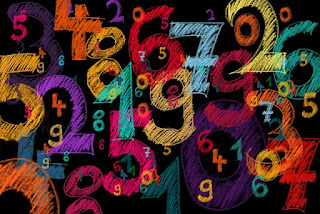Prime Factor Math Explained – A Simple, Step-by-Step Guide.
The meaning of a factor.
Let's examine the main aspects of this issue one at a time. The dictionary typically defines a factor as a situation, an occurrence, or a behaviour that influences the result. So you can see that the element has an impact on the result. It serves a similar purpose in mathematics. Factors are numbers that add up to form new numbers.
Consider the example of 3 * 2 = 6. Here, the components of 6 are 3 and 2.
A prime number is one with just two elements, namely the number itself and the number one.
consecutive prime natural numbers. Except for prime multiples, such as 2, 3, 5, or 11, every prime number may be expressed in the form 6n + 1 or 6n - 1 where n is a natural integer. For illustration: 6(1) - 1 = 5 6(1) + 1 = 7 6(2) - 1 = 11 6(2) + 1 = 13 6(3) – 1 = 17 6(3) + 1 = 19 6(4) - 1 = 23 6(4) + 1 = 25 (multiple of 5)
What are prime determinants?
Prime factors of a number are its factors that are also prime numbers. As we all know, the factors of four are two and four, with two being the prime factor of four. How can I determine if a number is prime or not? You may determine whether or not the given number is a prime number using one of the two techniques listed below.Approach 1:
We are aware that the only even prime number is two. Only the numbers 2 and 3 areconsecutive prime natural numbers. Except for prime multiples, such as 2, 3, 5, or 11, every prime number may be expressed in the form 6n + 1 or 6n - 1 where n is a natural integer. For illustration: 6(1) - 1 = 5 6(1) + 1 = 7 6(2) - 1 = 11 6(2) + 1 = 13 6(3) – 1 = 17 6(3) + 1 = 19 6(4) - 1 = 23 6(4) + 1 = 25 (multiple of 5)
Approach 2:
The following formula may be used to determine the prime numbers that are bigger than 40. If n = 0, 1, 2,....., 39, then n2 + n + 41. For illustration: (0)2 + 0 + 0 = 41 (1)2 + 1 + 41 = 43 (2)2 + 2 + 41 = 47How can I determine a number's prime factors?
To determine the prime factors of a given integer, there are two key techniques. As follows:
top factors using the division techniqueUsing the factor tree, prime factors
Let's learn how to use these two approaches, along with some examples, to identify the prime factors of a given integer.
The prime factorization of the Factors of 35, there are a total of four components, with 35 serving as the biggest and 1 serving as the smallest. These elements include 1, 5, 7, and 35. The pair factor of 35 is the result of multiplying two integers in pairs to get the original number. 1 and 35 are the pair factors for these (5, 7).
prime amplification.
The multiplication of a number's prime factors may be used to represent any number. Prime factorization is the term for this.
A factor tree may be used to explain prime factors. Consider the number to be the top of a tree, with branches representing various aspects of it.
For instance, consider 90. The answer is 2*45. Now multiply 45 by 5, which is 9. 9 would once again be 3*3. So 90 equals 2*3*3*5. As a result, 90 turns out to be excessive, whereas 2, 3, 3, and 5 are the various branches of 45. The numbers cannot be further split down, hence the branches end there.
Numbers may be classified in a variety of ways, as seen in the example above. Although fractions, decimal numbers, and whole numbers are already recognisable to you, there are additional unique qualities of numbers that you should also take into account. It is possible to categorise numbers as even, odd, perfect squares, repeating, or non-repeating decimal
In addition to using the factor tree, you may also use the short division technique to identify a number's prime factors.
Let's use this approach to get the prime factors of 60.
60 prime factors are factored
60 = 2 × 2 × 3 × 5
Finding the Least Common Multiple of supplied integers using the short division approach is also helpful.
Unsolved Case
Find every prime factor of 627, as an example.
Solution: We have created a factor tree;
= 627 factor tree
As a result, the primary elements of 627 are 3,11,19.
i.e. 627 = 3 × 11 × 19.



Comments
Post a Comment